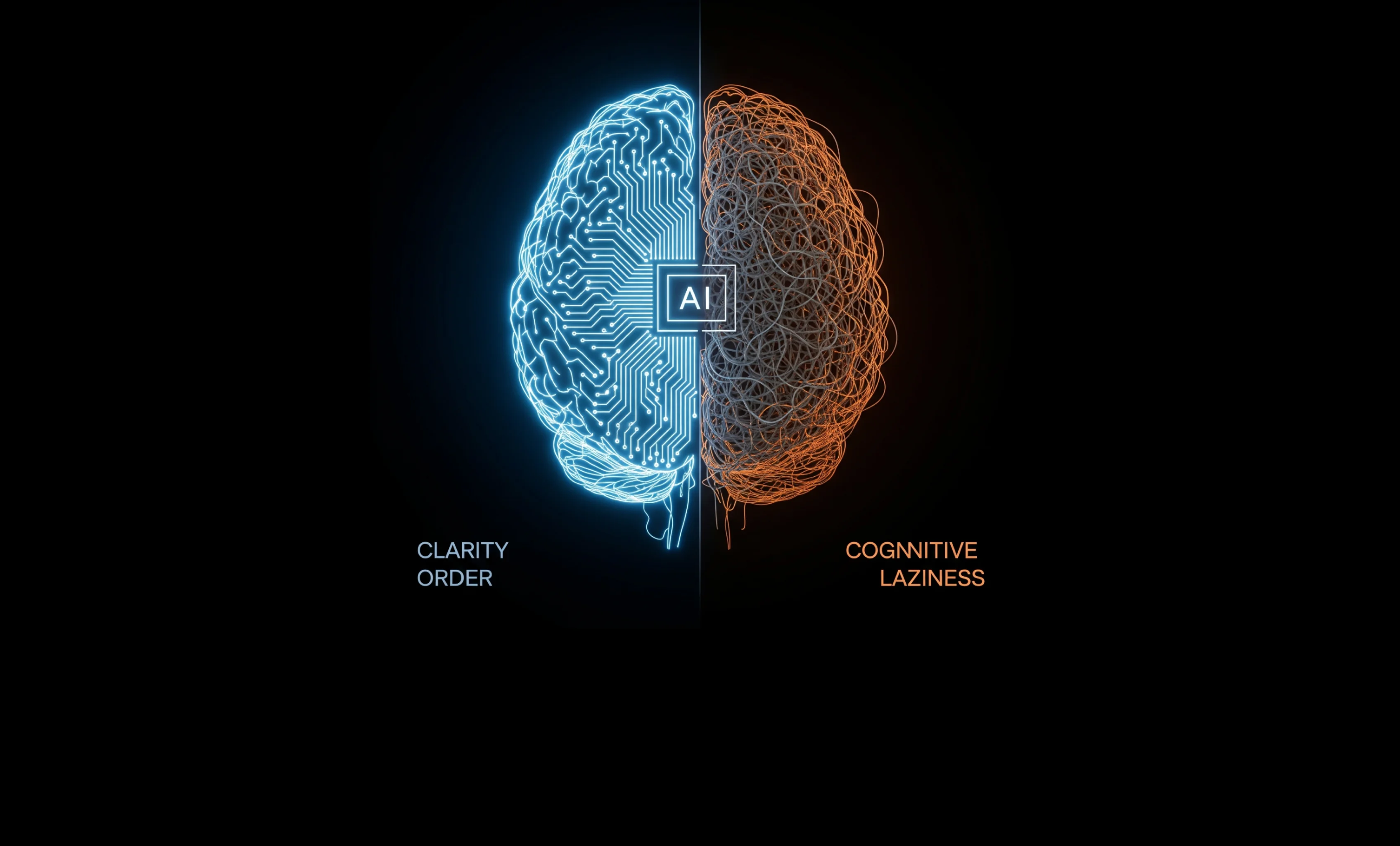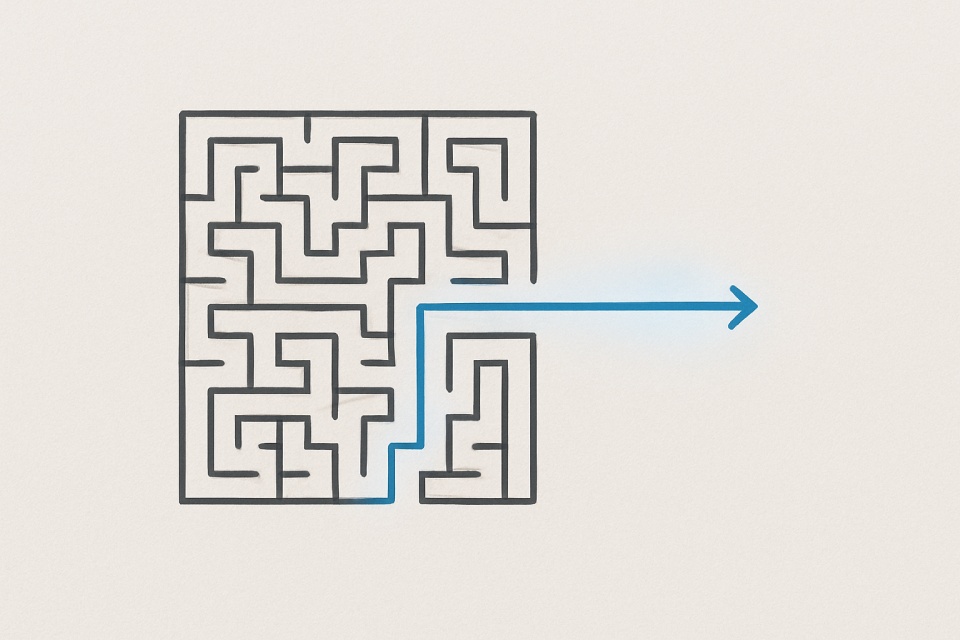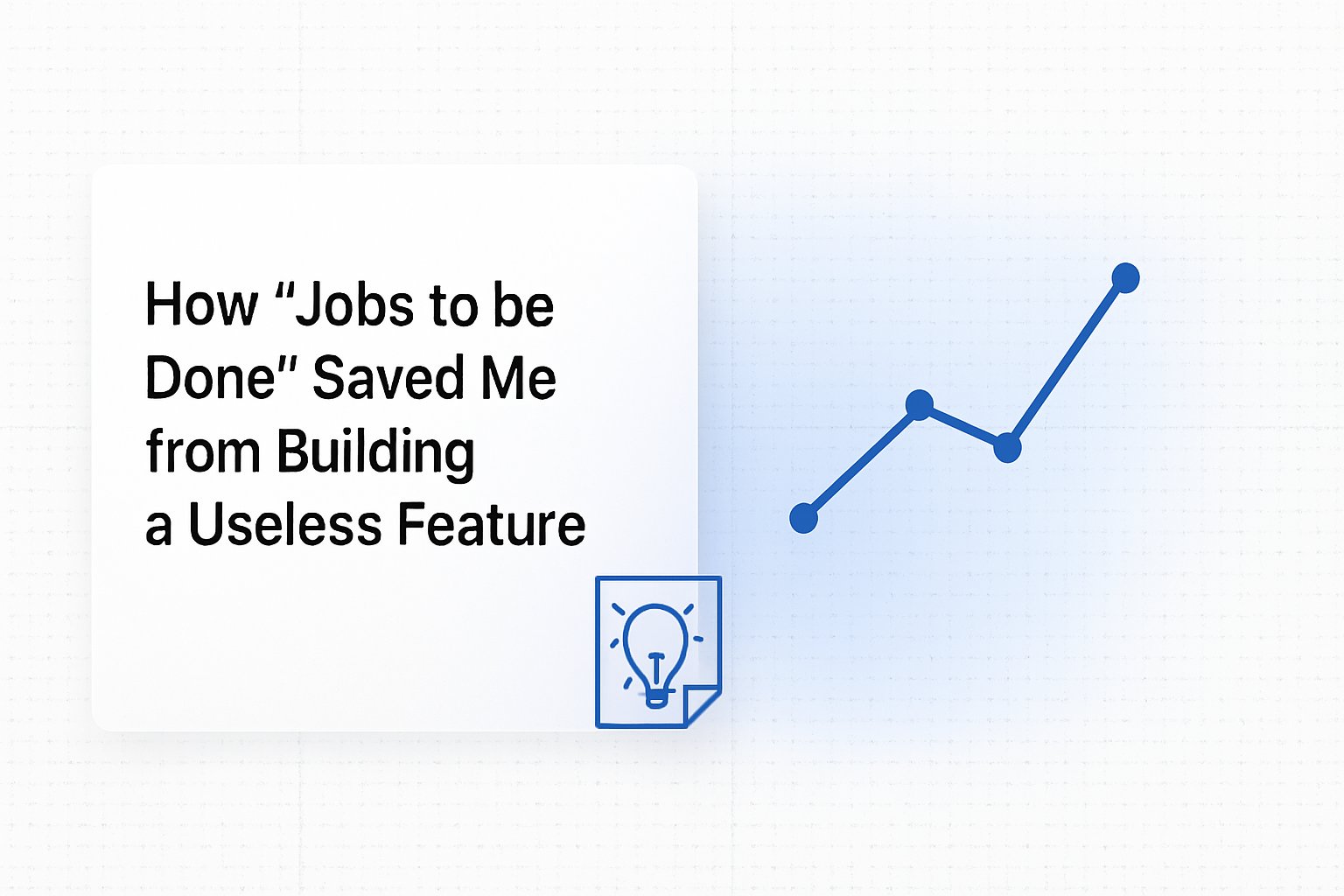In a world saturated with artificial intelligence, a single, unsettling question is echoing in our minds: Is this incredible technology chipping away at our ability to think for ourselves? The debate around AI and critical thinking is no longer academic. It’s a practical, daily concern. We fear that by leaning too heavily on algorithms, we risk outsourcing our curiosity and trading our analytical skills for the instant gratification of a correct answer.
But this narrative paints AI as the villain. I believe that’s a mistake. AI isn’t a thief stealing our cognitive abilities; it’s a mirror reflecting our own intentions back at us.
This isn’t just a theoretical debate for me. As someone who transitioned from a career in marketing, built on understanding human nuance, to the world of software development, built on logic and systems, this question defines my daily learning process. My journey wasn’t powered by a formal computer science degree, but by a relentless drive to learn, problem-solve, and connect ideas. Today, the challenge is to integrate AI into this journey not as a shortcut, but as a catalyst for deeper understanding.
The impact of AI on our critical thinking depends entirely on the mode we choose to engage with it. Are you a passive passenger, or are you the pilot?
The Autopilot Trap: The Subtle Erosion of Critical Thinking
The “Autopilot” mode is the path of least resistance, and it’s paved with the bricks of cognitive laziness. It’s the subconscious choice we make when we prioritize speed over substance. This is what it looks like in practice:
- Blind Implementation: You encounter a problem—a bug in your code, a tricky paragraph to write—and immediately ask an AI for the solution. You copy, paste, and move on. The immediate problem vanishes, but so does a crucial learning opportunity. You’ve fixed the “what” without ever understanding the “why.”
- Thoughtless Outsourcing: Instead of wrestling with a concept, structuring your own arguments, or designing your own framework, you hand the entire intellectual load over to the machine. You ask it to “write an outline” or “create a strategy” from scratch, reducing your role to that of a prompter.
- Uncritical Acceptance: The AI provides an answer, and you accept it as definitive truth. You don’t question its assumptions, ask for alternative perspectives, or verify its sources.
This isn’t just laziness; it has a neurological basis. Author Nicholas Carr, in his books The Shallows and The Glass Cage, powerfully argues that over-reliance on automation can lead to skill degradation and a diminished awareness of our environment. When we let AI do the heavy lifting, our own mental muscles for analysis, evaluation, and creative problem-solving begin to atrophy. We stop building mental models and start just looking for prompts.
I faced this trap head-on while learning Python. I was stuck on a particularly nasty data manipulation task using the Pandas library. My first instinct was to post the entire problem to an AI. It gave me a dense, one-line solution that worked. I was tempted to just move on, but I forced myself to stop. I realized I couldn’t explain how it worked. I had bypassed the struggle and, in doing so, had learned nothing about method chaining, boolean indexing, or efficient data handling. I was on autopilot, and it was a flight to nowhere.

The Co-pilot Manifesto: How to Use AI Effectively to Augment Your Intellect
The alternative is the “Co-pilot” mode. Here, you remain the thinker, the strategist, the pilot. The AI becomes your trusted navigator—an intelligent tool that expands your capabilities, challenges your assumptions, and accelerates your growth. This is how you can actively foster AI and critical thinking skills simultaneously.
Here are five key roles an AI Co-pilot can play:
1. The Brainstorming Partner: To Broaden Your Horizons
Don’t ask for a finished product; ask for raw materials. Use AI to break through creative blocks and explore the full spectrum of possibilities.
- Autopilot Prompt: “Give me a name for my new coffee shop.”
- Co-pilot Prompt: “I’m starting a coffee shop in a university district that will also serve as a late-night study hub. The vibe is cozy, intellectual, and slightly vintage. Give me 20 name ideas organized into three categories: names based on literary references, names based on scientific concepts, and playful, modern names.“
2. The Socratic Tutor: To Battle-Test Your Ideas
A core element of critical thinking is the ability to examine an idea from all sides. Train your AI to be your most rigorous critic.
- Autopilot Prompt: “Is it a good idea to launch a subscription box for indoor plants?”
- Co-pilot Prompt: “I’m developing a business plan for a subscription box for indoor plants. Act as a skeptical venture capitalist and argue against this idea. Focus on logistical challenges, market saturation, and customer lifetime value. Ask me three tough questions I need to answer.“
3. The Learning Accelerator: To Demystify Complexity
True intelligence isn’t about knowing everything; it’s about being able to learn anything. Use AI to break down daunting subjects into first principles, a method championed by Feynman.
- Autopilot Prompt: “Explain API endpoints.”
- Co-pilot Prompt: “I’m learning about APIs for the first time. Explain how API endpoints, GET requests, and JSON payloads work together using a simple analogy of ordering food at a restaurant.“

4. The Skill Builder: To Create Deliberate Practice
Learning requires more than just theory; it requires practice. You can use AI to generate personalized exercises to build concrete skills.
- Autopilot Prompt: “Teach me JavaScript.”
- Co-pilot Prompt: “I have a basic understanding of JavaScript variables and functions, but I struggle with arrays. Create five practice problems for me that specifically target array manipulation methods like
.map(),.filter(), and.reduce(). Provide a sample solution for each so I can check my work.“
5. The Clarity Enhancer: To Refine Your Communication
Whether it’s code, an email, or a blog post, clear communication is a superpower. Use AI as a whetstone to sharpen your words and logic.
- Autopilot Prompt: “Rewrite this sentence.”
- Co-pilot Prompt: “Review this paragraph from my project proposal. Help me make it more persuasive and concise. Identify any jargon that could be simplified and suggest a stronger opening sentence to grab the reader’s attention.“

The Real Journey is the One Within
Ultimately, the conversation about AI and critical thinking comes down to a personal philosophy. It’s about recognizing that the goal isn’t just to arrive at a destination—the right answer, the finished code, the completed project. The real, lasting value lies in the journey you take to get there. The struggle, the dead ends, the small breakthroughs, and the final “aha!” moment—that is where competence is forged.
This mindset was just as critical in my marketing career as it is in coding. The best campaigns never came from a flash of inspiration, but from the messy process of research, debate, testing, and learning from what didn’t work.
AI can dangerously shorten that messy, valuable process, or it can powerfully enrich it. It can be a crutch that lets our intellectual muscles wither or a gym that helps us build them stronger than ever.
The choice is, and always will be, ours.
Further Reading & Sources:
- Carr, Nicholas G. The Glass Cage: Automation and Us. W. W. Norton & Company, 2014.
- “What Is Critical Thinking? (& How to Improve It)” – McKinsey & Company Article on developing key skills.
- “AI in Education: The Future of Learning and Teaching” – UNESCO Report on the potential of AI to personalize learning.
Now, I want to hear from you. How are you actively using AI as a Co-pilot to enhance your critical thinking? Share your most effective prompt or technique in the comments below.
I’m Reza Ghaderipour. Explore more of my thoughts, insights, and experiences on my blog.




